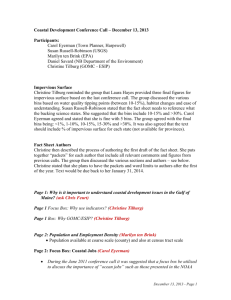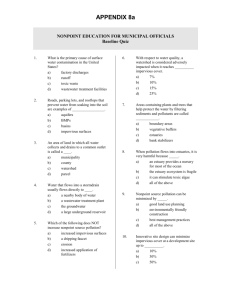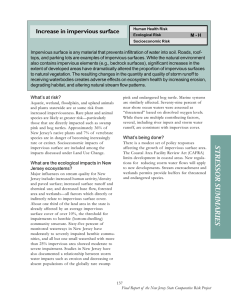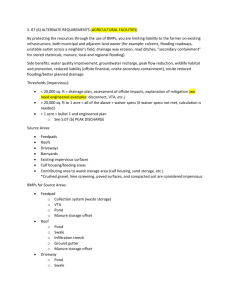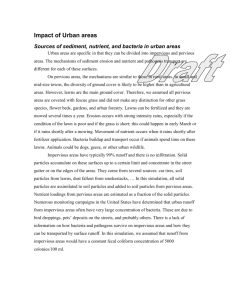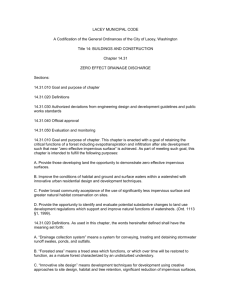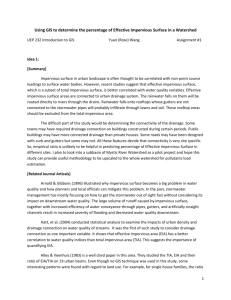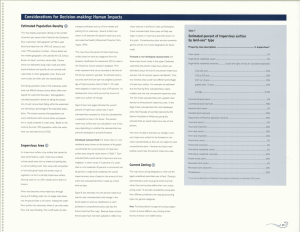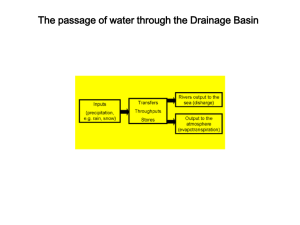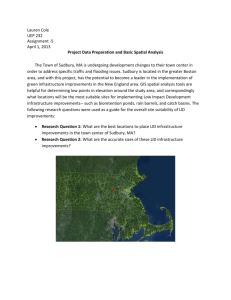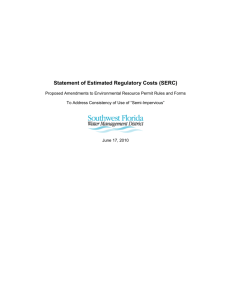Coastal Development Conference Call
advertisement
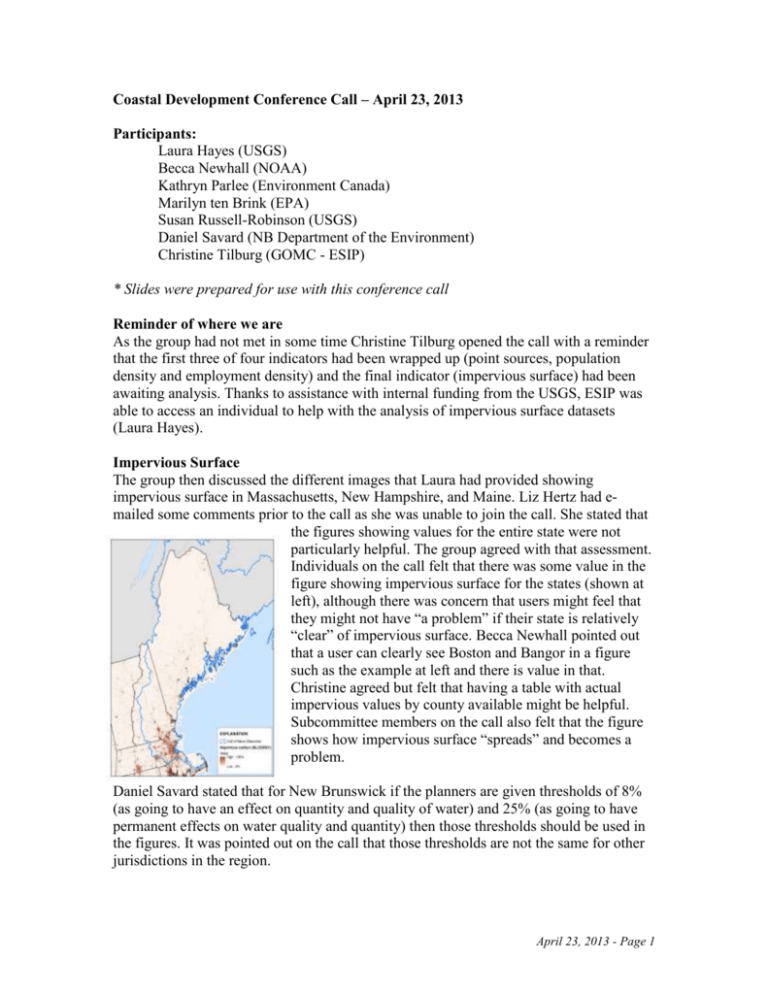
Coastal Development Conference Call – April 23, 2013 Participants: Laura Hayes (USGS) Becca Newhall (NOAA) Kathryn Parlee (Environment Canada) Marilyn ten Brink (EPA) Susan Russell-Robinson (USGS) Daniel Savard (NB Department of the Environment) Christine Tilburg (GOMC - ESIP) * Slides were prepared for use with this conference call Reminder of where we are As the group had not met in some time Christine Tilburg opened the call with a reminder that the first three of four indicators had been wrapped up (point sources, population density and employment density) and the final indicator (impervious surface) had been awaiting analysis. Thanks to assistance with internal funding from the USGS, ESIP was able to access an individual to help with the analysis of impervious surface datasets (Laura Hayes). Impervious Surface The group then discussed the different images that Laura had provided showing impervious surface in Massachusetts, New Hampshire, and Maine. Liz Hertz had emailed some comments prior to the call as she was unable to join the call. She stated that the figures showing values for the entire state were not particularly helpful. The group agreed with that assessment. Individuals on the call felt that there was some value in the figure showing impervious surface for the states (shown at left), although there was concern that users might feel that they might not have “a problem” if their state is relatively “clear” of impervious surface. Becca Newhall pointed out that a user can clearly see Boston and Bangor in a figure such as the example at left and there is value in that. Christine agreed but felt that having a table with actual impervious values by county available might be helpful. Subcommittee members on the call also felt that the figure shows how impervious surface “spreads” and becomes a problem. Daniel Savard stated that for New Brunswick if the planners are given thresholds of 8% (as going to have an effect on quantity and quality of water) and 25% (as going to have permanent effects on water quality and quantity) then those thresholds should be used in the figures. It was pointed out on the call that those thresholds are not the same for other jurisdictions in the region. April 23, 2013 - Page 1 Marilyn stated that it is important that readers of the fact sheet know that the region is developing at a rapid and complex rate and that if nothing is done the suburban and rural areas will end up looking like the urban areas. Both during the call and after the call several webpages and documents were suggested as good places to look for alternative ways of presenting the impervious information. Christine will look into these and then work with Laura before the next call: Chesapeake Bay (John Jones) and presentation of rural, mixed and urban sites over time (Susan Russell-Robinson suggestion) http://www.csc.noaa.gov/digitalcoast/tools/isat/index.html (Becca Newhall email) www.whrc.org/unitedstates.html (Marilyn ten Brink e-mail) gis.rowan.edu/projects/uc/map_imperv.html# (Marilyn ten Brink e-mail) www.Capecodcommission.org/resources/RWMP/RWMP_ea_land.pdf (Marilyn ten Brink e-mail) State of the Environment Report – Land Use theme paper New Brunswick information After the discussion or presentation of US impervious data the group discussed the extent of the New Brunswick data and potential addition of any other data. The group decided to move forward with the estimating the county with what is available at this time. In the meantime Christine will reconnect with some New Brunswick individuals that might be aware of new developments with impervious surface coverage in the province. (Action to be taken: Christine will connect with the individuals below) Bill Budd, Senior Planner, Great Moncton Planning Commission, bill.budd@moncton.ca Tim Vickers, ACAP Saint John (or GIS individual) Next Steps Christine will work with Laura after going through the suggestions from individuals on the call to make some new figures for discussion during the next call. She will also try to see if progress has been made at any other locations in New Brunswick at obtaining impervious surface information. April 23, 2013 - Page 2
